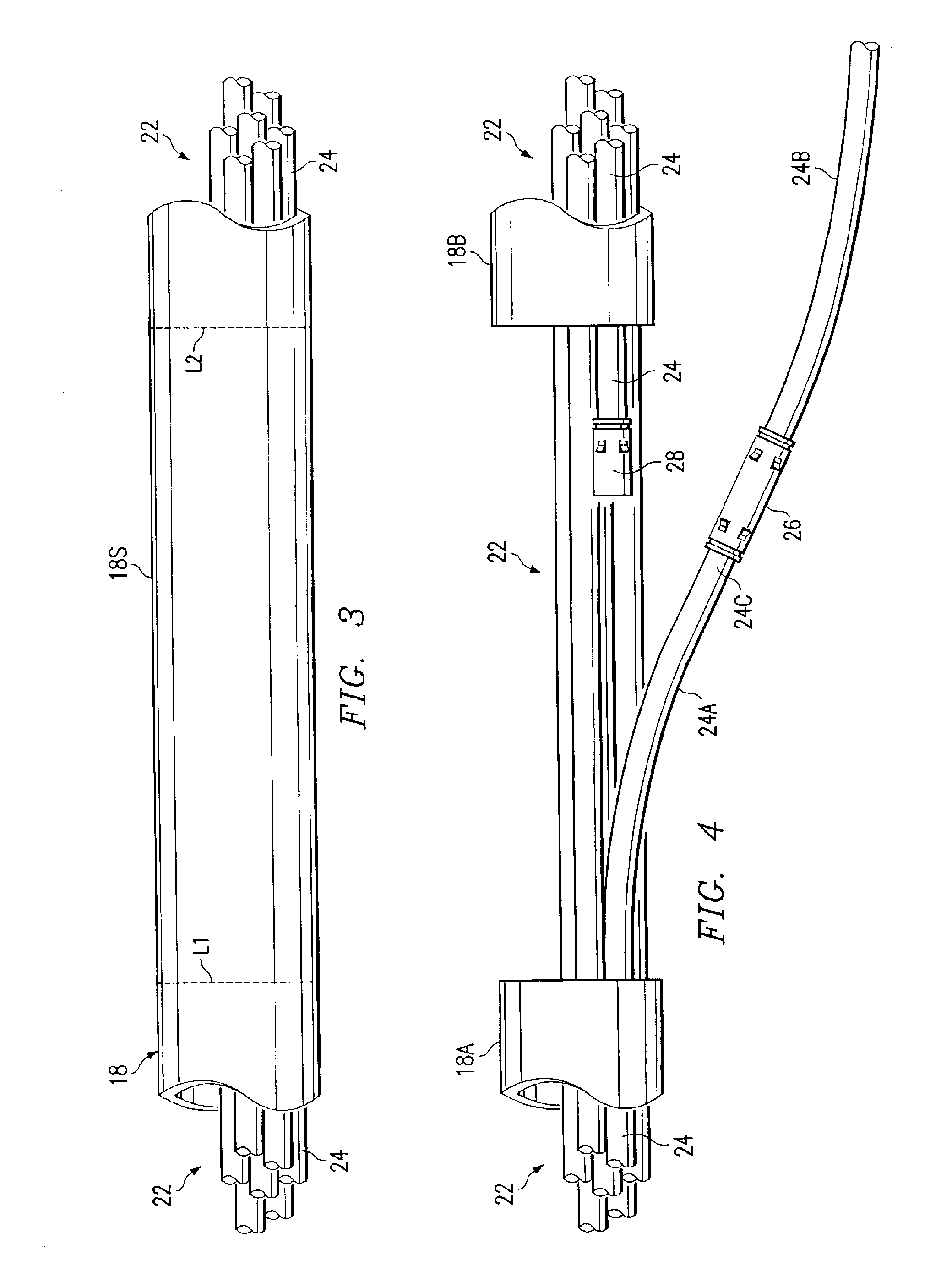Method of installing Y-branch splittable connector
- Summary
- Abstract
- Description
- Claims
- Application Information
AI Technical Summary
Benefits of technology
Problems solved by technology
Method used
Image
Examples
Embodiment Construction
[0034]Preferred embodiments of the invention will now be described with reference to various examples of how the invention can best be made and used. Like reference numerals are used throughout the description and several views of the drawing to indicate like or corresponding parts.
[0035]The splittable Y-branch connector 10 of the present invention is shown installed in a simple access network in FIG. 1 and FIG. 2. Here four feeding 12-fiber cables 12 are spliced at multi-joint splice points MJ to six 2-fiber branching drop cables 14 that make the drop to customer interface access stations 16, everything redundantly connected. The drop cables 14 are guided from the splice points MJ through the customer Y-branch connectors 10 to the customer stations 16, thus allowing one-shot blowing installation of cable to the customer. The entire feeding bundle and Y-branch drop connector 10 fit into a single 40 mm protective duct 18 as shown in FIG. 2. With this configuration it is possible to c...
PUM
 Login to View More
Login to View More Abstract
Description
Claims
Application Information
 Login to View More
Login to View More - R&D
- Intellectual Property
- Life Sciences
- Materials
- Tech Scout
- Unparalleled Data Quality
- Higher Quality Content
- 60% Fewer Hallucinations
Browse by: Latest US Patents, China's latest patents, Technical Efficacy Thesaurus, Application Domain, Technology Topic, Popular Technical Reports.
© 2025 PatSnap. All rights reserved.Legal|Privacy policy|Modern Slavery Act Transparency Statement|Sitemap|About US| Contact US: help@patsnap.com



